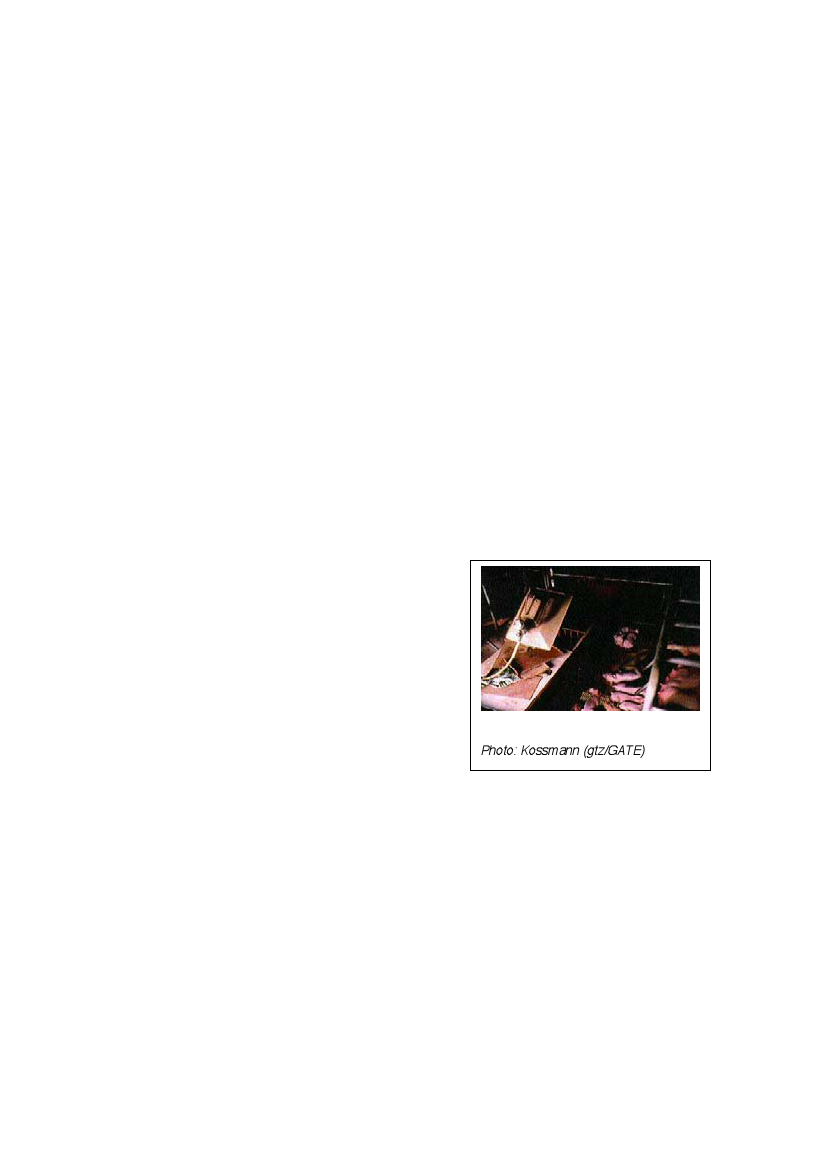
Adjusting a biogas lamp requires two consecutive steps:
1. pre-control of the supply of biogas and primary air without the mantle, initially
resulting in an elongated flame with a long inner core
2. fine adjustment with the incandescent body in place, resulting in a brightly glowing
incandescent body, coupled with slight further adjustment of the air supply (usually
more).
The adjustment is at its best when the dark portions of the incandescent body have just
disappeared. A lux-meter can be used for objective control of the lamp adjustment.
Radiant heaters
Infrared heaters are used in agriculture for achieving the temperatures required for raising
young stock, e.g. piglets and chicken in a limited amount of space. The nursery temperature
for piglets begins at 30-35°C for the first week and than gradually drops off to an ambient
temperature of 18-23°C in the 4th/5th week. As a rule, temperature control consists of raising
or lowering the heater. Good ventilation is important in the stable / nursery in order to avoid
excessive concentrations of CO or CO2. Consequently, the animals must be kept under
regular supervision, and the temperature must be checked at regular intervals. Heaters for
pig or chicken rearing require some 200-300 l/h as a rule of thumb.
Thermal radiation of heaters
Radiant heaters develop their infrared thermal radiation via a ceramic body that is heated to
600-800°C (red-hot) by the biogas flame. The heating capacity of the radiant heater is
defined by multiplying the gas flow by its net calorific value, since 95% of the biogas' energy
content is converted to heat. Small-heater outputs range from 1.5 to 10 kW thermal power.
Gas pressure
Commercial-type heaters are designed for operating
on butane, propane and natural gas at a supply
pressure of between 30 and 80 mbar. Since the
primary air supply is factory-set, converting a heater
for biogas use normally consists of replacing the
injector; experience shows that biogas heaters
rarely work satisfactorily because the biogas has a
low net calorific value and the gas supply pressure
is below 20 mbar. The ceramic panel, therefore, is
not adequately heated, i.e. the flame does not reach
the entire surface, and the heater is very susceptible
to draft.
Figure 14: Biogas radiant heater for
raising piglets in Thailand
Photo: Kossmann (gtz/GATE)
Safety pilot and air filter
Biogas-fueled radiant heaters should always be equipped with a safety pilot, which turns off
the gas supply if the temperatures goes low i.e. the biogas does not burn any longer. An air
filter is required for sustained operation in dusty barns.
Incubators
Incubators are supposed to imitate and maintain optimal hatching temperatures for eggs.
They are used to increase brooding efficiency.
Warm-water-heated planar-type incubators
Indirectly warm-water-heated planar-type incubators in which a burner heats water in a
heating element for circulation through the incubating chamber are suitable for operating on
biogas. The temperature is controlled by ether-cell-regulated vents.
22